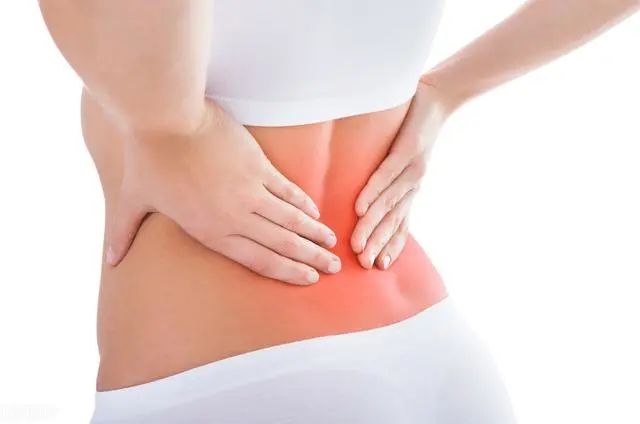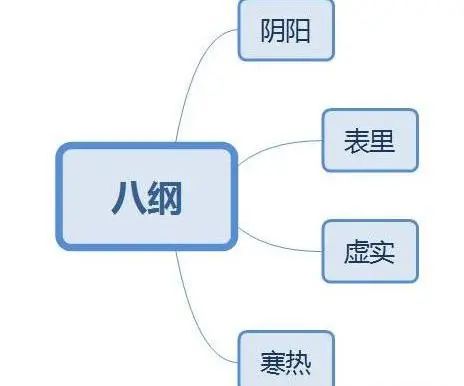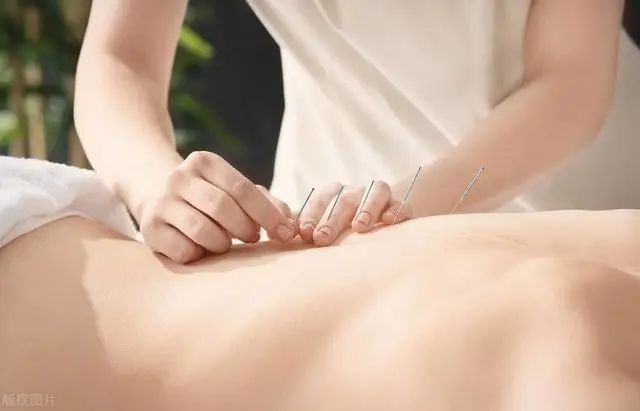Chronic low back pain is something that nearly every adult has experienced, varying in severity and duration. Previously, we discussed acute lumbar sprains; today, we will focus on chronic low back pain.

According to current understanding, chronic low back pain is a chronic non-bacterial inflammation of the lumbar muscle fibers, generally caused by sustained or repeated high tension in the lumbar muscles that exceeds physiological normal ranges.
In this discussion, we will primarily focus on TCM’s dialectical treatment. Low back pain encompasses a broad category, including kidney diseases, rheumatism, rheumatoid arthritis, lumbar muscle strain, lumbar hypertrophy, bone hyperplasia, and scoliosis, all of which can be referenced in this context.
From a TCM perspective, we cannot overlook the Eight Principles: Yin-Yang, Interior-Exterior, Cold-Heat, and Deficiency-Excess.

When you cannot clearly identify a condition, approaching it from these eight major directions often opens up your thinking. Is the condition on the exterior or interior? Is it cold or hot? Is it deficient or excessive? Is it Yin or Yang? Even in cases of mixed cold and heat, there is usually a tendency.
There are four common patterns of diagnosis.

The first is Cold-Damp Low Back Pain, often caused by prolonged sitting or lying in damp and cold environments, such as sewers or basements, or by being physically strong and frequently exposed to rain, leading to the invasion of cold and damp pathogens. This results in obstructed Qi and blood flow in the lower back, causing pain.
This type of cold-damp pain may worsen on rainy days. Tongue and pulse manifestations include a white, greasy tongue coating and a deep, slow pulse. Treatment can involve a modified version of the Gan Jiang Ling Zhu Tang (Ginger, Poria, and Atractylodes Decoction), which includes Gan Cao (Licorice), Gan Jiang (Dried Ginger), Fu Ling (Poria), and Bai Zhu (White Atractylodes). Gan Jiang warms the middle and disperses cold, Bai Zhu strengthens the spleen and transforms dampness, Fu Ling promotes urination and drains dampness, and Gan Cao harmonizes the other herbs.
If the pain is severe with cold limbs, add Fu Zi (Aconite); if the pain persists, add Xu Duan (Dipsacus) and Gou Ji (Cibotium); if the pain is migratory or accompanied by joint pain, it may also involve Wind pathogens, and you can use Du Huo Ji Sheng Tang (Angelica Pubescens and Taxillus Decoction) or add Fang Feng (Siler).
The second is Damp-Heat Low Back Pain, which typically occurs in summer when damp heat is at its peak. The invasion of damp heat obstructs the flow of Qi and blood in the meridians, leading to low back pain.
This condition is characterized by a sensation of fullness and pain in the lower back, with heat accompanying the pain, worsening in hot or rainy weather, and short, red urine. Tongue and pulse manifestations include a yellow, greasy tongue coating and a rapid, slippery pulse. Treatment should focus on clearing heat, draining dampness, and relieving pain, using a modified Er Miao San (Two Marvels Powder), which consists of Cang Zhu (Atractylodes) and Huang Bai (Phellodendron). Cang Zhu transforms dampness and strengthens the spleen, while Huang Bai clears heat and dries dampness. The modification should include blood-activating, wind-dispelling, and damp-transforming herbs.
If the pain is severe, add Ru Xiang (Frankincense) and Mo Yao (Myrrh) to invigorate blood and relieve pain.
The third is Kidney Deficiency Low Back Pain, which often accompanies Liver Deficiency, indicating a deficiency of both Liver and Kidney, usually due to congenital insufficiency, prolonged illness, aging, or excessive strain, leading to Kidney essence deficiency that fails to nourish the tendons and meridians, resulting in low back pain. Symptoms include a dull ache in the lower back, a preference for pressure and massage, weakness in the legs and knees, exacerbation with overexertion, and relief with rest. The tongue and pulse are typically weak, showing a pale tongue and a deep, thin, weak pulse. At this point, it is necessary to tonify the Kidney and stabilize the lower back. If there is Yang deficiency, Yang should be warmed; if there is Yin deficiency, Yin should be nourished. Common tonifying formulas include Zuo Gui Wan (Left Kidney Pill) for nourishing Kidney Yin, Liu Wei Di Huang Wan (Six Flavor Rehmannia Pill) for nourishing Kidney Yin, You Gui Wan (Right Kidney Pill) for tonifying Kidney Yang, and Shen Qi Wan (Kidney Qi Pill) for tonifying Kidney Yang, all of which are readily available.
The last is Blood Stasis Low Back Pain, which is generally caused by trauma leading to bruising or long-term Qi and blood stagnation, resulting in blood stasis. This type of pain is often sharp, localized, and tender to touch, worsening at night. Mild cases may cause difficulty bending or straightening, while severe cases may result in intense pain that prevents turning. The tongue may appear dark or have stasis spots, and the pulse is choppy. Treatment should focus on invigorating blood, dispelling stasis, and regulating Qi to relieve pain, using a modified version of Huo Luo Xiao Ling Dan (Invigorating Blood and Unblocking Collaterals Pill), which includes Dang Gui (Angelica), Dan Shen (Salvia), Ru Xiang (Frankincense), and Mo Yao (Myrrh).
For rheumatoid patients, add Du Huo (Angelica Pubescens), Wei Ling Xian (Clematis), and Qin Jiao (Gentiana); for those with Kidney deficiency, add Huai Niu Xi (Achyranthes) and Du Zhong (Eucommia) and Xu Duan (Dipsacus).
From an acupuncture perspective, we also consider the Kidney.

Pain in the lower back generally corresponds to the Bladder Meridian and the Governing Vessel. Acupuncture points are typically selected from the Bladder Meridian and the Governing Vessel, with Shenshu (Kidney Shu) being essential for tonifying the Kidney. If there is Kidney Yang deficiency, add Mingmen (Life Gate) or Yaoyangguan (Lumbar Yang Gate); if there is Kidney Yin deficiency, add Taixi (Great Stream). Adjustments should be made based on the aforementioned patterns. For Cold-Damp Low Back Pain, add Fengfu (Wind Palace); for Kidney Deficiency Low Back Pain, add Taixi and Mingmen; for Blood Stasis Low Back Pain, add Ge Shu (Diaphragm Shu), Shenshu, and Cilai (Second Layer). Treatment should be administered once daily with even tonification and sedation, retaining needles for 30 minutes.

Today, we conclude our discussion on chronic low back pain. If you have any questions, please leave a comment below, and remember to follow us!

